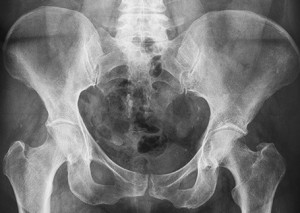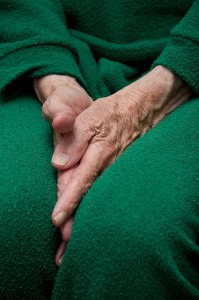Osteoporosis Overview
There is a reason why the popular “Got Milk?” advertising campaign hits home for so many people. The models in the ads look healthy, vibrant and strong. If these ads are insinuating that a glass of milk each day makes you strong and healthy, and helps keep weak bones at bay, then pour me a double.
While a lack of calcium (read information regarding calcium intake recommendations is one cause of weak bones that can lead to osteoporosis), there are many others that lead to this common, debilitating disease. Osteoporosis is a skeletal condition that causes bones to become weaker, less dense and more brittle. It is often referred to as the “bone thinning” disease and affects 25 million people each year with approximately 80% of these being women. So what do you need to know about osteoporosis? The physicians at Women’s Specialists of Plano provide bone density test screening daily to local Plano, Frisco and Dallas, Texas area women and were helpful in addressing this very question.
 Though symptoms may not appear until later on in adulthood, the bone thinning process actually begins in women around age 30 as this is when estrogen starts to decrease naturally within the body. By age 65, 80% of women will have some form of bone density loss. The disease alone is responsible for hundreds of thousands of fractures seen in area emergency rooms across the U.S. and accounts for billions of dollars in medical care. Even more alarming, in older adults, a hip fracture due to osteoporosis has very limited recovery prognosis and many will require constant care in helping with daily activities. In addition, many die of the complications during the recovery process. This is the whole rationale for treating osteopenia and osteoporosis: prevent fracture.
Though symptoms may not appear until later on in adulthood, the bone thinning process actually begins in women around age 30 as this is when estrogen starts to decrease naturally within the body. By age 65, 80% of women will have some form of bone density loss. The disease alone is responsible for hundreds of thousands of fractures seen in area emergency rooms across the U.S. and accounts for billions of dollars in medical care. Even more alarming, in older adults, a hip fracture due to osteoporosis has very limited recovery prognosis and many will require constant care in helping with daily activities. In addition, many die of the complications during the recovery process. This is the whole rationale for treating osteopenia and osteoporosis: prevent fracture.
Those at Risk for Osteoporosis
There are many risk factors as to why a woman might develop osteoporosis including a family history of brittle bones, fair complexion, poor nutrition, smoking, low weight, alcoholism, a long-term low calcium intake and an estrogen deficiency. In addition, there are many medical conditions associated with this disease such as multiple sclerosis, anemia, rheumatoid arthritis, eating disorders, pulmonary disease and many, many others. Certain long-term prescription drug use also affects bone loss. Research has concluded that Caucasian women are at most risk over Hispanic, Asian African American and Indian. For the most part, anyone could be at risk for developing osteoporosis.
Osteoporosis Prevention: What can You do?
At a young age, even in the teen years, women can begin a life of healthy choices that will help delay bone loss for a long time. Most women will not even think about getting a bone density test until long after their teen years. Until then, one should avoid cigarettes and alcohol and focus on a healthy lifestyle, eating a healthy diet rich in protein, vegetables, calcium and vitamin D (both will help strengthen bones.) Exercise and strength training is also very important. Women should educate themselves on the foods that help to prevent this disease as well as the medications that can lead to brittle bones. Unfortunately, there are some risk factors that cannot be changed including age, menopause, gender, family history and other medical problems.

Millions of women will live with osteoporosis. It is important to have bone screen tests yearly and to discuss treatment options with your doctor. Photo courtesy of Horia Varian, Flickr, Creative Commons
Living with Osteoporosis and the Importance of Bone Density Tests
Women should discuss bone loss and osteoporosis during their next visit for their well woman care. Bone density tests and a dual density bone densitometer can (often) determine how much bone loss has occurred. This is important to know so that an appropriate plan for the treatment for osteoporosis can be provided. The key to managing osteoporosis is to prevent more bone loss from occurring through healthy eating, exercise, and overall healthy lifestyle habits. Preventing injuries and falls becomes crucial for those living with this disease; this can be done by closely monitoring how you walk and where you step, wearing a brace when needed, and being aware of your surroundings at home where falls might occur. When osteoporosis becomes painful, causes fractures, etc., physical therapy, pain relievers and electrical nerve stimulation can be recommended treatment for osteoporosis to offer comfort. In addition, new drugs on the market today can offer exceptional treatment solutions for many women. Bisphosphonates, forteo, reclast and prolia are examples of the drugs that are being prescribed to thousands of women.
Although osteoporosis is something that every woman is at risk for developing, the lifestyle changes mentioned in this article are proactive modifications that can be made in order to onset the delay of symptoms. Please discuss your concerns with your doctor today and create a plan to keep your bones healthy and strong.
See other articles from obgynplano on the subject of osteoporosis.
For additional resources on osteoporosis, or to learn more about bone density tests, please contact the Plano, Frisco and Dallas, Texas area physicians at Women’s Specialists of Plano.
